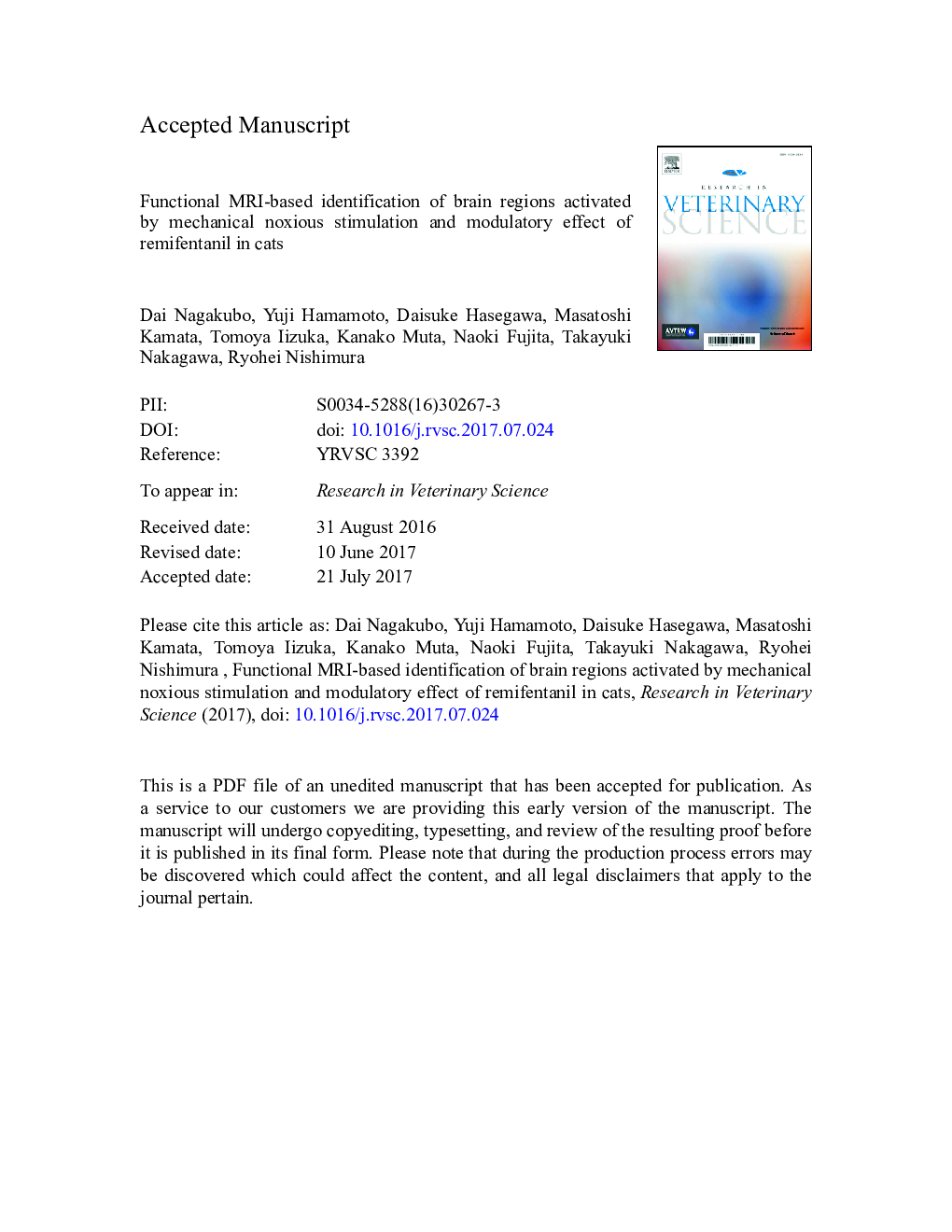| Article ID | Journal | Published Year | Pages | File Type |
|---|---|---|---|---|
| 5543926 | Research in Veterinary Science | 2017 | 20 Pages |
Abstract
This study was conducted to identify the brain regions corresponding to mechanical noxious stimulation in cats using functional magnetic resonance imaging (fMRI) and to investigate the modulatory effect of remifentanil on the activation of these regions. Six healthy cats were anesthetized using a constant-rate infusion of alfaxalone. Cats were allocated to one of three treatment groups: remifentanil 0 (saline), 0.25, and 0.5 μg/kg/min. A 3.0-T MRI unit was used to collect fMRI data. During the fMRI scanning, mechanical noxious stimulation was applied by tail clamping. The brain regions activated by the stimulation were identified based on blood oxygenation level-dependent (BOLD) responses. The modulatory effects of remifentanil were evaluated using a region of interest (ROI) analysis comparing signal changes in each brain region. Increased activity from noxious stimulation was observed in the somatosensory area (the postcruciatus gyrus, the anterior part of the marginalis gyrus, and the anterior part of the ectomarginalis gyrus), the parietal association area (the middle part of the marginalis gyrus and the middle part of the ectomarginalis gyrus), the cingulate cortex, the hippocampus, and the cerebellum. The results of the ROI analysis indicated that activations in the somatosensory area, the cingulate cortex, the hippocampus, and the cerebellum were significantly modulated (P < 0.05) by remifentanil. In cats, activation patterns evoked by mechanical noxious stimulation were observed in several brain regions thought to be involved in various aspects of pain processing, including sensory discrimination and integration, affect, and motor response. These brain responses were modulated by remifentanil.
Keywords
Related Topics
Life Sciences
Agricultural and Biological Sciences
Animal Science and Zoology
Authors
Dai Nagakubo, Yuji Hamamoto, Daisuke Hasegawa, Masatoshi Kamata, Tomoya Iizuka, Kanako Muta, Naoki Fujita, Takayuki Nakagawa, Ryohei Nishimura,
